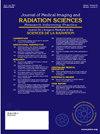临床实践中放射学学生对x线平片检查的学习:一项民族志研究
IF 1.3
Q3 RADIOLOGY, NUCLEAR MEDICINE & MEDICAL IMAGING
Journal of Medical Imaging and Radiation Sciences
Pub Date : 2025-02-27
DOI:10.1016/j.jmir.2024.101758
引用次数: 0
摘要
在临床实践中学习x线平片检查是成为放射诊断专业人员的核心要素。临床实践中的学习处于真实的社会文化背景中,促进学生的学习从合法的外围参与到全面参与。本研究的目的是描述和了解放射学学生在临床实践中对x线平片检查的学习情况。方法对17名学生进行观察、学习日记和访谈,并对学生的x线平片临床实践进行实地记录。从解释民族志的角度研究学习。数据分析采用恒定比较法。结果在临床实践中,放射学学生的学习受到一种学习文化的支配,这种文化要求学生有能力解释和适应临床实践环境中流行的学习风格。学习方式是:1)通过合作学习专业知识,2)通过学生的单独工作主动学习,3)通过在后台工作和遵循指示学习。在这些学习方式中,学习内容、患者护理和影像学的程度和深度各不相同。学习方法、合作学习、学生单干学习和在放射线技师多变指导下学习也存在差异。学生的学习受到放射技师的监督和学生的学习空间的影响。根据学生自己的评价,理论与实践联系的学习成果达到了不同的程度。结论学习文化为临床实践中促进学生学习的社会文化环境提供了多种机会。研究结果可用于发展和实施放射学专业学生的临床实践。进一步的研究可以着眼于加强课程的合作学习。本文章由计算机程序翻译,如有差异,请以英文原文为准。
Radiography students’ learning of plain X-ray examinations in clinical practice: An ethnographic study
Introduction
Learning of plain x-ray examinations in clinical practice is the core element of becoming a professional in diagnostic radiography. Learning in clinical practice is situated in an authentic socio-cultural context promoting students’ learning from legitimate peripheral participation to full participation. The purpose of this study was to describe and understand radiography students’ learning of plain X-ray examinations in clinical practice.
Methods
The data consisted of observations, learning diaries and interviews of 17 radiography students and the researcher's own field notes regarding students’ clinical practice of plain X-ray examinations. Learning was studied from the perspective of interpretive ethnography. Data were analyzed by the constant comparative method.
Results
In clinical practice, radiography students’ learning was governed by a learning culture requiring the ability to interpret and adapt to the prevailing learning styles of the clinical practice contexts. The learning styles were: 1) learning towards expertise through collaboration, 2) learning actively through student's solo work and 3) learning by working in the background and following instructions. In these learning styles, the extent and depth of the learning content, patient care and imaging varied. Learning methods, learning in cooperation, students’ solo working and learning under radiographers’ changeable guidance differed as well. Students’ learning was impacted by the factors radiographer's supervision and student's learning space. According to students’ own evaluation, the learning outcomes regarding theory-practice connection were achieved to a variable extent.
Conclusion
Learning culture provided variable opportunities for the socio-cultural context to promote students’ learning in clinical practice. The results can be applied when developing and implementing radiography students’ clinical practice. Further research could focus on strengthening the curriculum towards cooperative learning.
求助全文
通过发布文献求助,成功后即可免费获取论文全文。
去求助
来源期刊

Journal of Medical Imaging and Radiation Sciences
RADIOLOGY, NUCLEAR MEDICINE & MEDICAL IMAGING-
CiteScore
2.30
自引率
11.10%
发文量
231
审稿时长
53 days
期刊介绍:
Journal of Medical Imaging and Radiation Sciences is the official peer-reviewed journal of the Canadian Association of Medical Radiation Technologists. This journal is published four times a year and is circulated to approximately 11,000 medical radiation technologists, libraries and radiology departments throughout Canada, the United States and overseas. The Journal publishes articles on recent research, new technology and techniques, professional practices, technologists viewpoints as well as relevant book reviews.
 求助内容:
求助内容: 应助结果提醒方式:
应助结果提醒方式:


